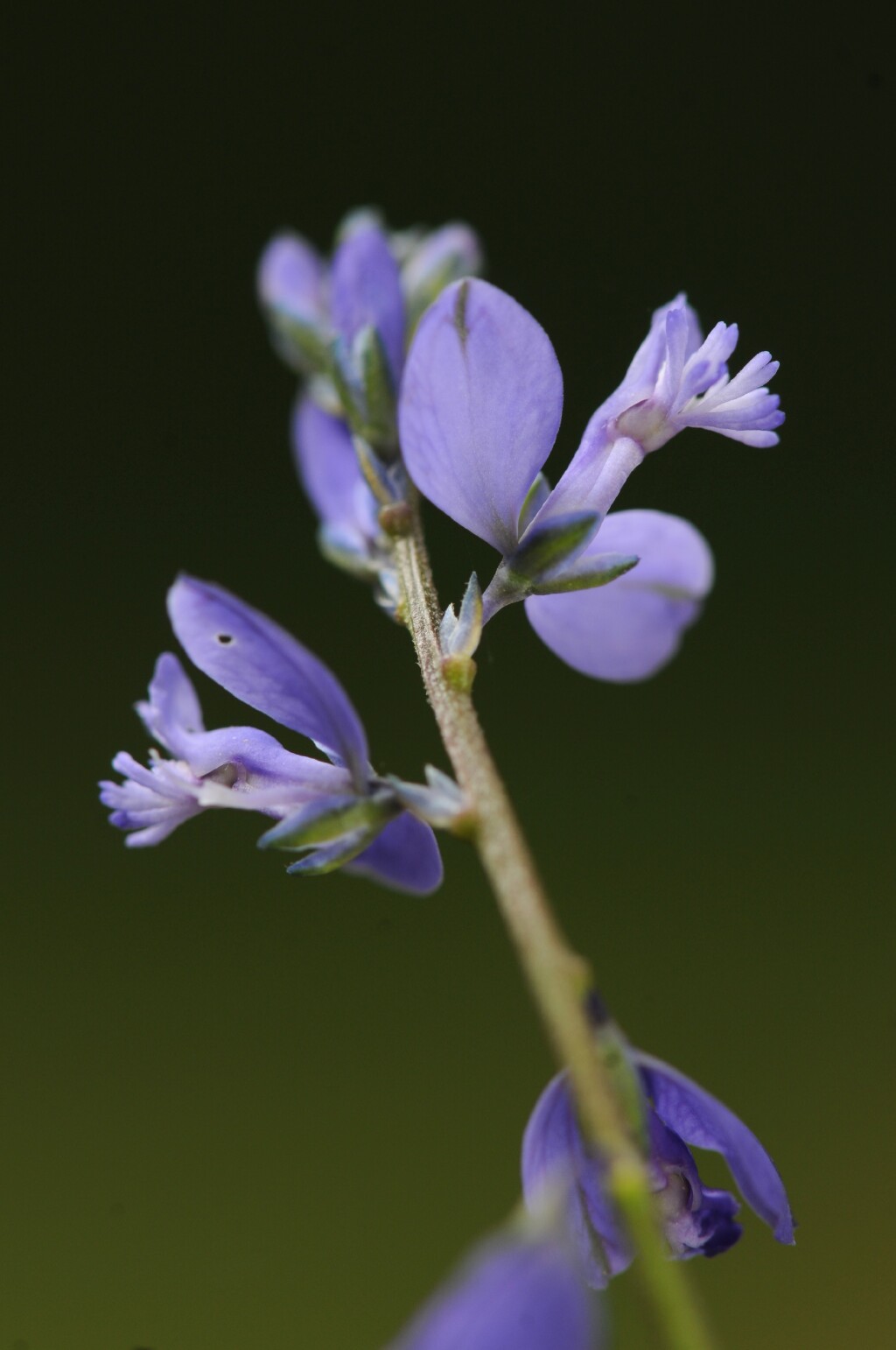Polygalaceae
Annual to perennial herbs, twiners, shrubs or (not in Victoria) small trees; glabrous or with unicellular hairs. Leaves alternate (rarely opposite or whorled), entire; stipules absent. Inflorescence a spike, raceme, panicle or a solitary flower. Flowers zygomorphic (often superficially resembling pea-flowers), bisexual, usually subtended by a bract and 2 bracteoles; sepals 5 (in Australia), the lower pair often partially connate and the lateral pair often larger and sometimes petaloid; petals (in Australian species) 3, or sometimes 5 with 2 of these vestigial, usually adnate to the stamens, forming a short tube, the median petal (keel) often fringed or crested; stamens (3–)8 (or 10), usually in 2 series, filaments usually fused at base into a ventrally slit sheath, anthers basifixed, opening by apical pores or short slits; ovary superior, 2(–5)-locular, ovules 1 per locule, style simple, usually apically bilobed, stigma capitate. Fruit a loculicidal capsule or a nut, samara or drupe; seeds often hairy, often arillate.
An almost cosmopolitan family of c. 21 genera and c. 1000 species; 5 genera (1 naturalized) and c. 86 species (7 naturalized) in Australia.
At least some members of the family (e.g. some Comesperma and Polygala) emit a sarsaparilla-like or oil of wintergreen (methyl salicylate) smell from the roots.
Walsh, N.G. (1999). Polygalaceae. In: Walsh, N.G.; Entwisle, T.J., Flora of Victoria Vol. 4, Cornaceae to Asteraceae, pp. 130–137. Inkata Press, Melbourne.
 Spinning
Spinning


